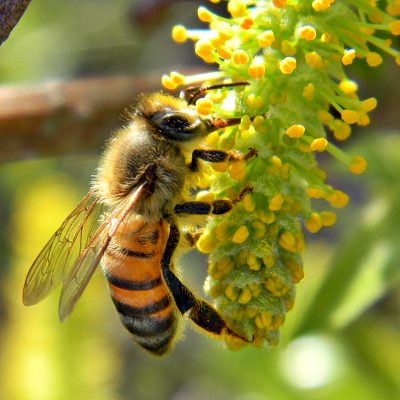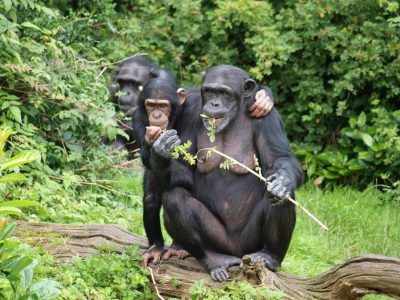Animal Culture
Aristotle was the first to provide evidence of social learning in bird songs and Charles Darwin was the first to suggest what became known as social learning in explaining the transmission of an adaptive behavior pattern seen in a population of honey bees. Social learning happens when behaviors are acquired through observation or are taught by other members of a social group (e.g., caregivers, siblings) or social institutions (e.g., schools, places of worship). Social learning among humans is important because it means that we can avoid costly and time-consuming trial and error and at the same time multiply the power of individual learning (Boyd & Richardson, 2005). Our collective brain power makes it possible for certain behaviors to become more adaptive and spread among groups.

The actual phrase animal culture was first proposed by Japanese primatologists who discovered socially transmitted food behaviors on Koshima Island in the 1940s among Japanese monkeys. The scientists observed a female monkey dunk a piece of potato in the ocean. Basically, she washed her food before she ate it and this innovation spread to a few other monkeys in the troop (the term for a group of monkeys). Over time, the scientists observed gender (female) and age (younger) differences in the monkeys’ abilities to imitate and learn the behavior but potato washing persists on the island today, over 60 years later (Hirata, Watanabe, Kawa, 2001). Social learning and transmission has also been documented in whales, dolphins and chimpanzees, as well as other animals.
Whale songs. Male humpback whales produce various songs over their lifetime, which are learned from other males in the population. Males in a population conform to produce the same mating song, consisting of a highly stereotyped vocal display involved in mate attraction. Researchers were able to record a series of songs and identified the cultural transmission of these songs across geographic distances (Western and Central South Pacific Ocean) over 11 years (Garland et al., 2013; Garland, Rendell, Lamoni, Poole and Noad, 2017).
Dolphin Sponges. A community of bottlenose dolphins in Western Australia use conical sponges as tools to find food (foraging). During “sponging,” dolphins break off a sponge and wear it over the rostrum (snout) while foraging on the seafloor (Smolker, et al., 1997; Mann et al., 2008). Scientists think that the dolphins use the sponges for protection while foraging. Researchers, using genetic analyses, found that all ‘spongers’ are descendants of a single matriline (mother to daughter) which suggests cultural transmission of the use of sponges, as tools, within a specific population (Mann and Sargeant, 2003).
Chimpanzee Tools. Chimpanzees also use tools for foraging but different types of tools are associated with specific populations. This means that not all chimpanzees make or use the same tools for the same purpose (see Whiten articles for summary). For example, one troop of chimpanzees plunges sticks into termite nests to gather food and another troupe uses bark or leaves as a kind of scoop to forage for termites. There is a documented instance of chimpanzees in the Democratic Republic of Congo creating a tool that is like a paint brush or bottle washer that results in more successful foraging.


